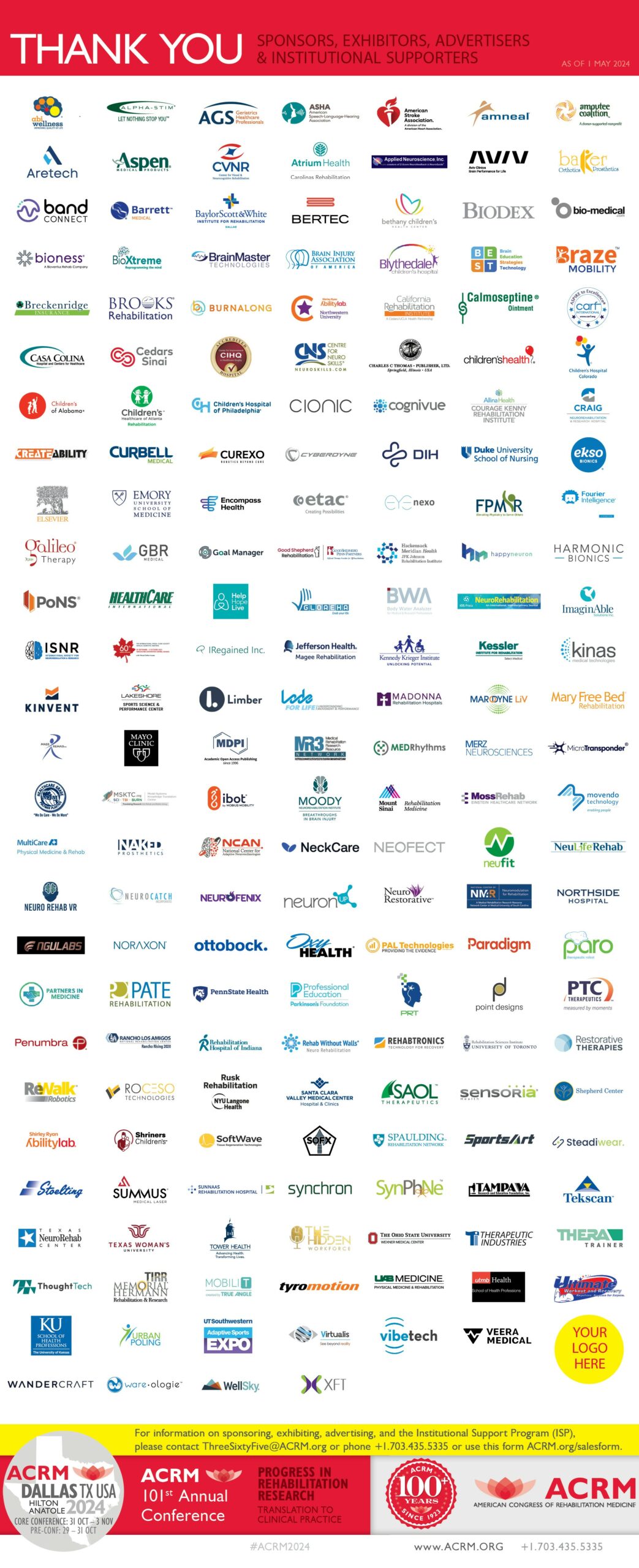
Volume 6, Number 1: Fall 2023 Edition
Latest Outcome Measures Publications
Coma Recovery Scale-Revised (CRS-R)
CRS-R is a standardized neurobehavioral assessment measure designed for use in patients with disorders of consciousness. The CRS-R consists of 6 subscales designed to assess auditory function, receptive and expressive language, visuoperception, communication ability, motor functions, and arousal level. In a recent study published by Onami et al., they explored the prognostic value of the CRS-R in predicting disability outcomes in patients with severe traumatic brain injury using the Disability Rating Scale (DRS). This study generates a tool that can be used to predict the probability that a patient with severe traumatic brain injury lands in 1 of 3 disability categories. If you are interested in obtaining more information, we invite you to explore the following publication:
Onami S, et al. Coma Recovery Scale-Revised Predicts Disability Rating Scale in Acute Rehabilitation of Severe Traumatic Brain Injury. Arch Phys Med Rehabil. 2023 Jul;104(7):1054-1061.
Music Therapy Assessment Tool for Awareness in Disorders of Consciousness (MATADOC)
MATADOC is a standardized assessment for minimally responsive patients with disorders of consciousness. The MATADOC protocol elicits behavioral responsiveness using live music in 5 tasks. A total score ranges 0-10 scoring behaviors across 14-items. Magee et al. examined (1) the concurrent validity of the MATADOC with the criterion standard Coma Recovery Scale-Revised (CRS-R) for outcomes of awareness in patients with prolonged disorders of consciousness (PDoC), (2) the relationship between MATADOC items and CRS-R function subscales in similar domains, and (3) determine if items/function subscales measure different constructs. They found that, unlike the CRS-R, the music-based MATADOC scores auditory localization for complexity of response and categorizes these behaviors as conscious rather than reflexive. If you are interested in knowing more, we kindly direct your attention to the following publication:
Magee WL, et al. Validation of the Music Therapy Assessment Tool for Awareness in Disorders of Consciousness With the Coma Recovery Scale-Revised. Arch Phys Med Rehabil. 2023 Jul;104(7):1107-1114.
8-Item Economic Quality of Life Measure (Econ-QOL) Short Form
Econ-QOL short form is an 8-item questionnaire measuring quality of life related to perceived financial burden. Likert-type scale responses for each item included 1=never, 2=rarely, 3=sometimes, 4=usually, and 5=always. Examples of items: I have enough income to live the life I want; I can afford to live where I want to; and I can afford to feed myself and my family. Carlozzi et al. provided reliability and validity data to support the clinical utility of Econ-QOL scores in caregivers of civilians and service members/veterans with traumatic brain injury (TBI). In the event of your interest in delving deeper into the subject matter, we invite you to explore the following publication:
Carlozzi et al. Initial Evidence for Reliable and Valid Use of Scores on the 8-Item Econ-QOL Short Form to Measure Economic Quality of Life in Caregivers of Persons With Traumatic Brain Injury. Arch Phys Med Rehabil. 2023 Mar;104(3):430-437
10-Item Lower Extremity Functional Scale (LEFS-10)
LEFS is a commonly used instrument to measure lower limb functionality. This scale was developed in 1999 by Binkley et al and has cross-cultural adaptation for more than 10 languages. Cid André Fidelis-de-Paula-Gomes et al. proposed a short version of the LEFS, to compare our short version with the different structures proposed for the LEFS by the specialized literature, and to verify the criterion validity of the best structure of the LEFS. If you seek further details on the topic, we recommend referring to the following publication:
Fidelis-de-Paula-Gomes CA, et al. Ten-Item Lower Extremity Functional Scale (LEFS-10): Instrument Reduction Based on Brazilian Patients With Lower Limb Dysfunction. Arch Phys Med Rehabil. 2023 Mar;104(3):438-443



